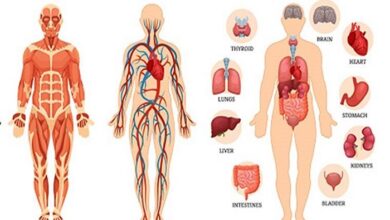PCNOK: Everything You Need to Know About This Technology

PCNOK is a new technology that has gained popularity over the past few years. It promises to transform how we interact with computers and electronic devices. This article will examine in detail what PCNOK is, how it operates, and its prospective impact on the technology sector.
Listing of Contents
- Introduction
- What is PCNOK?
- The History of PCNOK
- How Does PCNOK Work?
- PCNOK vs. Traditional Computing
- The Benefits of PCNOK
- The Future of PCNOK
- PCNOK in Business
- PCNOK in Education
- PCNOK in Healthcare
- The Ethics of PCNOK
- Concerns and Risks of PCNOK
- How to Get Started with PCNOK
- PCNOK: Frequently Asked Questions (FAQs)
- Conclusion
1. Introduction
PCNOK is a new technology that is set to change the way we interact with computers and devices. It is an advanced form of computing that has the potential to transform various industries. In this article, we will explore what PCNOK is, how it works, and its potential benefits and concerns.
2. What is PCNOK?
PCNOK stands for Probabilistic Computing using Noisy Optical Kernels. It is a form of computing that is based on the principles of quantum mechanics. Unlike traditional computing, which relies on binary digits (bits), PCNOK uses qubits (quantum bits) to perform computations. This enables PCNOK to perform complex computations much faster than traditional computers.
3. The History of PCNOK
PCNOK is a relatively new technology that has been under development since the early 2000s. It was first proposed by a team of researchers from MIT, led by Seth Lloyd. The researchers were inspired by the principles of quantum mechanics and sought to create a new form of computing that could take advantage of these principles.
4. How Does PCNOK Work?
PCNOK is based on the principles of quantum mechanics, which is a branch of physics that deals with the behavior of matter and energy at the atomic and subatomic level. PCNOK uses qubits (quantum bits) to perform computations. Unlike traditional bits, which can only have a value of either 0 or 1, qubits can have a value of 0, 1, or a superposition of both. This enables PCNOK to perform multiple computations simultaneously, resulting in much faster processing times.
5. PCNOK vs. Traditional Computing
PCNOK is fundamentally different from traditional computing. Traditional computers use binary digits (bits) to represent information, while PCNOK uses qubits. Traditional computers can only perform one calculation at a time, while PCNOK can perform multiple calculations simultaneously. This makes PCNOK much faster than traditional computers for certain types of computations.
6. The Benefits of PCNOK
PCNOK has the potential to revolutionize various industries, including business, education, and healthcare. The benefits of PCNOK include faster processing times, increased accuracy, and the ability to solve complex problems that are currently beyond the capabilities of traditional computers.
7. The Future of PCNOK
The future of PCNOK is bright. As the technology continues to evolve, it is likely to become even more powerful and versatile. It has the potential to transform various industries and change the way we interact with technology.
8. PCNOK in Business
PCNOK has the potential to revolutionize the way businesses operate. It can enable faster and more accurate data analysis, allowing companies to make more informed decisions. PCNOK can also be used for advanced simulations, enabling companies to test and optimize their products and processes.
One potential use case for PCNOK in business is in finance. PCNOK can be used for high-frequency trading, enabling traders to make decisions faster and more accurately. It can also be used for risk analysis and portfolio optimization, allowing companies to manage their investments more effectively.
9. PCNOK in Education
PCNOK can also have a significant impact on education. It can enable faster and more accurate data analysis, allowing researchers to make more informed decisions. It can also be used for advanced simulations, enabling students to test and optimize their hypotheses.
One potential use case for PCNOK in education is in scientific research. PCNOK can be used for complex simulations, enabling researchers to study complex phenomena such as protein folding or climate change. It can also be used for data analysis, allowing researchers to analyze large datasets and make more accurate predictions.
10. PCNOK in Healthcare
PCNOK can also be used to improve healthcare outcomes. It can enable faster and more accurate data analysis, allowing doctors to make more informed decisions. PCNOK can also be used for advanced simulations, enabling doctors to test and optimize treatments.
One potential use case for PCNOK in healthcare is in personalized medicine. PCNOK can be used to analyze a patient’s genetic data and develop personalized treatment plans based on their unique genetic profile. It can also be used for drug discovery, enabling researchers to develop new drugs more quickly and accurately.
11. The Ethics of PCNOK
As with any new technology, there are ethical considerations to be taken into account when it comes to PCNOK. One potential concern is the potential for PCNOK to be used for malicious purposes, such as cyber attacks or the development of advanced weapons.
Another concern is the potential for PCNOK to exacerbate existing inequalities. PCNOK is a complex and expensive technology, which means that it may only be accessible to a small group of people. This could lead to a widening of the digital divide, with those who have access to PCNOK enjoying significant advantages over those who do not.
12. Concerns and Risks of PCNOK
There are also some technical concerns and risks associated with PCNOK. One potential risk is the potential for errors in computations. Because PCNOK is based on probabilistic principles, there is always a chance of errors occurring. This could have significant consequences in fields such as finance or healthcare, where accuracy is critical.
Another concern is the potential for PCNOK to be vulnerable to attacks from quantum computers. While PCNOK is more secure than traditional computing, it may still be vulnerable to attacks from more advanced quantum computers.
13. How to Get Started with PCNOK
Getting started with PCNOK can be challenging, as it is a relatively new and complex technology. However, there are resources available to help individuals and organizations learn more about PCNOK and how to use it.
One option is to attend a PCNOK workshop or training program. These programs can provide hands-on experience with PCNOK and help individuals and organizations understand how to use it effectively.
Another option is to work with a PCNOK consulting firm. These firms can provide expert guidance and support, helping individuals and organizations navigate the complexities of PCNOK and develop effective strategies for using it.
14. PCNOK: Frequently Asked Questions (FAQs)
How is PCNOK different from traditional computing?
PCNOK is fundamentally different from traditional computing because it is based on quantum principles. This means that it operates using quantum bits, or qubits, which can exist in multiple states simultaneously. This enables PCNOK to perform certain computations much faster and more efficiently than traditional computing.
What are the potential applications of PCNOK?
PCNOK has the potential to be used in a wide range of fields, including finance, healthcare, and scientific research. It can enable faster and more accurate data analysis, advanced simulations, and new forms of encryption and security.
How can I get started with PCNOK?
Getting started with PCNOK can be challenging, as it is a relatively new and complex technology. However, there are resources available to help individuals and organizations learn more about PCNOK and how to use it. These include workshops, training programs, and consulting services.
What are the risks associated with PCNOK?
There are several potential risks associated with PCNOK, including the potential for errors in computations, the risk of attacks from quantum computers, and the potential for exacerbating existing inequalities. These risks will need to be carefully managed as PCNOK becomes more widely adopted.
Conclusion
PCNOK is a revolutionary new technology that has the potential to transform a wide range of industries. Its ability to perform certain computations faster and more efficiently than traditional computing could lead to significant improvements in areas such as finance, healthcare, and scientific research.
However, there are also significant technical and ethical considerations to be taken into account when it comes to PCNOK. The potential for errors in computations, the risk of attacks from quantum computers, and the potential for exacerbating existing inequalities are all important factors that will need to be carefully managed as PCNOK becomes more widely adopted.
Despite these challenges, the potential benefits of PCNOK are too significant to ignore. As more individuals and organizations begin to explore the possibilities of PCNOK, we can expect to see significant innovation and progress in a wide range of fields.




